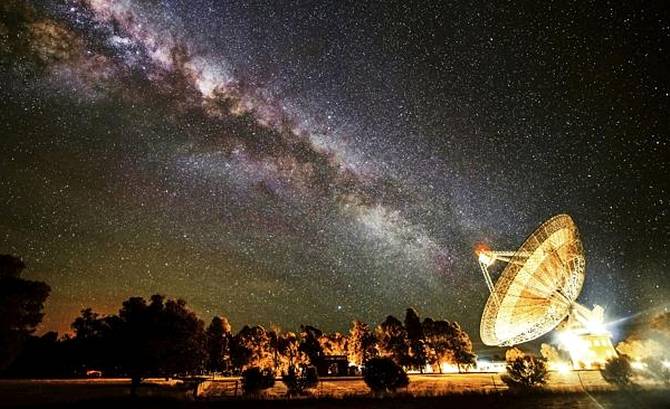
#Radio signal from space nasa professional#
It is a world-renowned institution of higher learning with research activities spanning three campuses, 11 faculties, 13 professional schools, 300 programs of study and over 39,000 students, including more than 10,400 graduate students.


McGill is consistently ranked as one of the top universities, both nationally and internationally. The research was funded by McGill University and the Indian Institute of Science.įounded in Montreal, Quebec, in 1821, McGill University is Canada’s top ranked medical doctoral university. The Giant Metrewave Radio Telescope was built and is operated by NCRA-TIFR. “ Detection of H I 21 cm emission from a strongly lensed galaxy at z ∼ 1.3” by Arnab Chakraborty and Nirupam Roy was published in the Monthly Notices of the Royal Astronomical Society. It also opens exciting new opportunities for probing the cosmic evolution of stars and galaxies with existing low-frequency radio telescopes. This effectively results in the magnification of the signal by a factor of 30, allowing the telescope to pick it up,” says co-author Nirupam Roy, an Associate Professor in the Department of Physics at the Indian Institute of Science.Īccording to the researchers, these results demonstrate the feasibility of observing faraway galaxies in similar situations with gravitational lensing. In this specific case, the signal is bent by the presence of another massive body, another galaxy, between the target and the observer. “Gravitational lensing magnifies the signal coming from a distant object to help us peer into the early universe. Picking up the signal from a distant galaxy “It’s the equivalent to a look-back in time of 8.8 billion years,” says Chakraborty, who studies cosmology at McGill’s Department of Physics and the Trottier Space Institute at McGill. The signal detected by the team was emitted from this galaxy when the universe was only 4.9 billion years old, enabling the researchers to glimpse into the secrets of the early universe. The researchers observed the atomic mass of the gas content of this particular galaxy is almost twice the mass of the stars visible to us. A look back in time to the early universeįor the first time, the researchers were able to detect the signal from a distant star-forming galaxy known as SDSSJ0826+5630 and measure its gas composition. This will help us understand the composition of galaxies at much greater distances from Earth,” he adds. “But thanks to the help of a naturally occurring phenomenon called gravitational lensing, we can capture a faint signal from a record-breaking distance. Until now, it’s only been possible to capture this particular signal from a galaxy nearby, limiting our knowledge to those galaxies closer to Earth,” says Arnab Chakraborty, a Post-Doctoral Researcher at McGill University under the supervision of Professor Matt Dobbs. “A galaxy emits different kinds of radio signals.

With the help of the Giant Metrewave Radio Telescope in India, this is the first time this type of radio signal has been detected at such a large distance. Now researchers from Montreal and India have captured a radio signal from the most distant galaxy so far at a specific wavelength known as the 21 cm line, allowing astronomers to peer into the secrets of the early universe.

However, these signals become weaker the further away a galaxy is from Earth, making it difficult for current radio telescopes to pick up. Magnetars usually flare by the second, but this object takes longer.How do stars form in distant galaxies? Astronomers have long been trying to answer this question by detecting radio signals emitted by nearby galaxies. The researchers said their observations might match up with the definition of an ultra-long period magnetar. This new, incredibly bright object, however, only turned on for about a minute every 18 minutes. ‘Fast transients’ – like a type of neutron star called a pulsar – flash on and off within milliseconds or seconds.” “‘Slow transients’ – like supernovae – might appear over the course of a few days and disappear after a few months. “When studying transients, you’re watching the death of a massive star or the activity of the remnants it leaves behind,” said study coauthor Gemma Anderson, ICRAR-Curtin astrophysicist, in a statement. Dr Natasha Hurley-Walker/ICRAR/Curtin/GLEAM The star icon shows the position of the mysterious repeating transient. This image shows a new view of the Milky Way from the Murchison Widefield Array, with the lowest frequencies in red, middle frequencies in green, and the highest frequencies in blue.


 0 kommentar(er)
0 kommentar(er)
